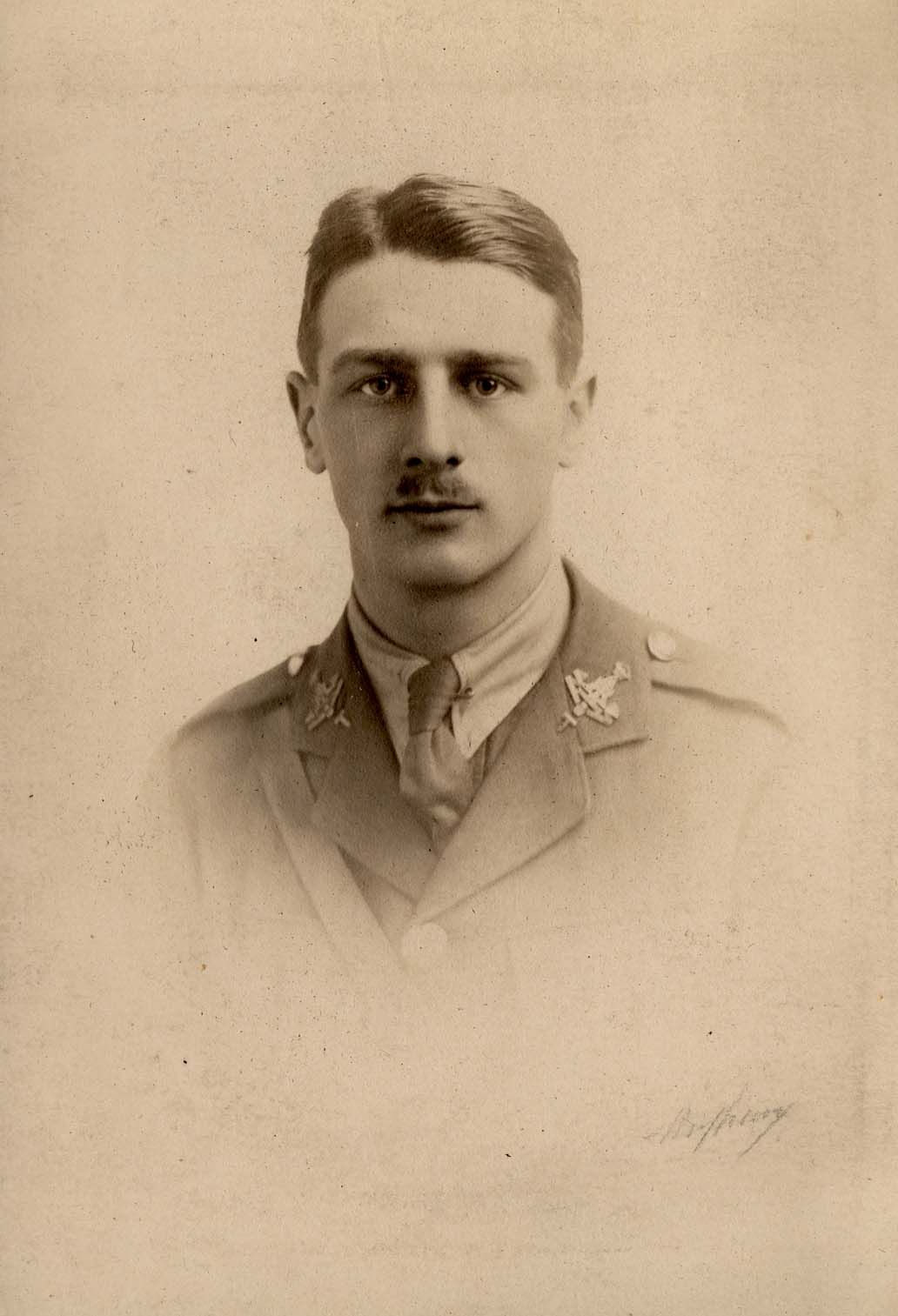
George Frederick Gywn Rees and his younger brother Charles Bernard Russell Rees from Leicestershire both joined the Yorkshire Regiment during the First World War. Their parents, Sydney and Margaret Rees were relatively wealthy and they lived in Sheffield for much of their childhood. Sydney was a Church of England clergyman. Born only 1 year apart, George in 1895 and Charles in 1896, it would appear that they took similar paths through their early life. In the 1911 census they were both recorded as living at a boarding school in Workshop along with several hundred other boys.
George and Charles both joined the 5th Battalion of the Yorkshire Regiment in 1915. Unfortunately their service records do not appear to have survived but museum records track their military careers from 1915 to 1918. George was wounded twice, in November 1916 and in June 1917, but neither wound appears to have affected his career as he was promoted to acting Captain in July 1917. Charlie however appears to have made it through the war relatively unscathed. Other than various promotions he is not listed until June 1918 as missing, turning up as a Prisoner of War in September. He returned home in late 1918 to Scrayingham Rectory, Stamford Bridge, York.
Charles’ medal card records that he received the Victory Medal and the British War Medal. Both brothers survived the war but we do not know what happened to them later in life.

Lt Charles Rees
Explore more memories from the ribbon
-
Harry Patch
When canvassing the local businesses for information about characters from the time of the First World War for our Ribbon of Remembrance, a major surprise came from Wendy, shop manager at the Castle Hill Bookshop. “You know what my name is?!” was her reply to the enquiry. Wendy Patch is the granddaughter of Harry Patch, the ‘Last Fighting Tommy’. Henry John Patch died on 25th July 2009, aged 111 years, having attained a level of celebrity that he can never have imagined at the time when he was No 2 on a Lewis gun team in the Duke of Cornwall’s Light Infantry. Harry was an apprentice plumber before he was conscripted into the army at the age of 18. He saw action at the Third Battle of Ypres, though his war came to an end on 22nd September 1917 following a German shell burst which killed three of his fellow Lewis gunners. Harry’s wound saw him hospitalised for 12 months. The Armistice came about while he was convalescing on the Isle of Wight. Following the war, Harry married Ada Billington, had two sons Denis and Roy and returned to work as a plumber. Harry only spoke about the war in the latter part of his life and when he did it was without any animosity towards the Germans who faced him across No-man’s Land. As one of the few Great War veterans who survived into the 21st century, Harry was invited to Buckingham Palace and 10 Downing Street. He was…
-
Robert Codling
Robert Codling was the son of John and Elizabeth Codling of 13 Revesby Street, Tyne Dock, South Shields. At the outbreak of war he enlisted in the Yorkshire Regiment and was posted to the 8th Battalion. 19873 Private Codling arrived in France in September 1915 and was in and out of the lines in October, November and December. The 8th Battalion relieved the 10th West Riding Regiment in trenches at La Rolanderie on the 18th December. Robert was awarded the DCM for his actions on the 21st. His citation reads, “For conspicuous gallantry near Rue du Bois on 21st December 1915, when under heavy fire and in the face of rifle grenades, he returned to a wounded comrade and brought him in. Later in the day he joined a patrol and searched under heavy fire for his platoon officer who had failed to return”. On 13th October 1916, at the age of 21, he died of wounds. The battalion had been serving in the area of Contalmaison and had suffered a number of casualties. He is buried at Dernancourt Communal Cemetery Extension in the Somme.
-
Major Charles Organ
Photographic research by Stuart Hodgson. Charles Organ had a long career in the army before arriving at Richmond Depot and acting as Recruiting Officer during the First World War, as his record from our museum catalogue recounts: Born at Woolwich 13th October 1853. Charles Organ joined as a Private 13th January 1873, Corporal 11th October 1873, Sergeant 15th August 1874, Colour Sergeant 27th August 1875, promoted to RSM on the 20th April 1882 and QM 1883, Hon. Captain 8th August 1893, Hon. Major 29th November 1900. He served in Bermuda, Halifax, Malta, Egypt, Cyprus, Egypt, Gibraltar and South Africa. He was employed as the Regimental Transport Officer 12th Dec 1900 – Sept 1902. Retired on 1st September 1902 but was then appointed QM the Royal Hospital Chelsea October 1903 – 1st September 1912, Created a MVO by King Edward July 1905. He served in the Nile Expedition 1885, Sudan Frontier Force, 1885-6, Boer War 1899-1902 including operations around Colesberg, actions at Paardeberg, Kitchener’s Kop, Proplar Grove and Drifontein and the occupation of Bloemfontein, was with the advance on Dewetsdorp, and action at Leuukop, in the march to Pretoria, actions at Brandfort, Kroonstadt, Vet and Zand rivers, and Johannesburg: took part in the advance eastwards, including the battles of Diamond Hill and Belfast – mentioned in despatches. He served with the Depot between August and November 1914 and then appointed as Staff Recruiting Officer in December 1915 becoming the Sub Area Commander for Gosport on the 19th February 1916. Died at…
